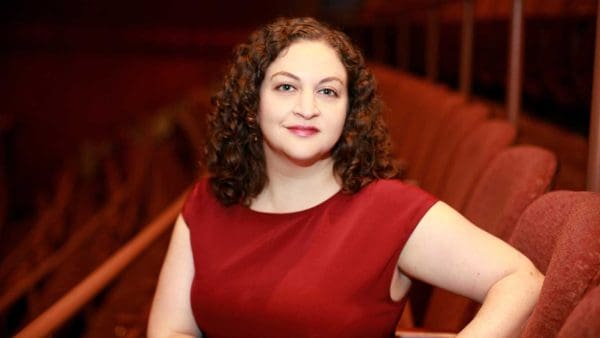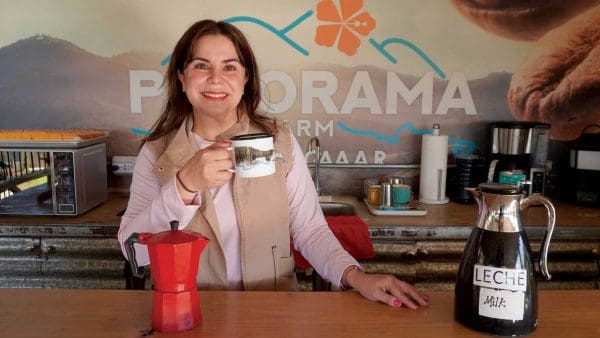PHOTO OF EMILY SNEFF ’11 BY ROSE LINCOLN
During the summer of 2015, Emily Sneff ’11 was poking around the online collections of the United Kingdom’s National Archives when she came across something curious. As a researcher for Harvard University’s Declaration Resources Project—a clearinghouse for scholarship into the Declaration of Independence—Sneff had been working on a database of all known copies of the document produced between 1776 and 1826. In a catalog of the West Sussex Records Office, she spotted a vague listing: “Manuscript copy, on parchment, of the Declaration in Congress of the thirteen United States of America.”
Sneff was immediately skeptical of its true contents—other such listings had turned out to be contemporary reproductions. But the fact that it noted the document was on parchment and claimed to be written by hand intrigued her. Only one other handwritten copy of the Declaration of Independence—the one on display under glass at the National Archives—exists on parchment. Sneff asked the archivist to send photographs of the document. Her intrigue grew.
It was several months later that she and Danielle Allen, the Declaration Resources Project’s director and professor of government at Harvard, boarded a plane for England. “It’s one of those things where it’s hard to do research on something when it’s halfway around the world and you’re relying on images,” says Sneff, who studied medieval history at Johns Hopkins. “Danielle was convinced that we’d fly over and find some note on the back: ‘20th-century reproduction.’ We both had butterflies in our stomachs unfolding it for the first time and looking at it.”
After almost two years of additional research and input from numerous other experts, the team announced that they had found the real deal: the second known manuscript copy of the Declaration of Independence on parchment. Further sleuthing led the researchers to believe that this copy, the same size as the one on display at the National Archives but in far better condition, was likely produced sometime in the 1780s and commissioned by James Wilson, a Pennsylvania lawyer and one of six men to have signed both the Declaration and the U.S. Constitution. “One thing that’s so special about it is that because it was stored folded up, the ink is really, really clear,” she say. “You can read every single letter, which is so rare.”
How it ended up in a depository in a small English town remains to be seen, but Sneff and Allen believe it could have once belonged to Charles Lennox, the Third Duke of Richmond (1735–1806), who was based in Sussex, England, and was a supporter of the colonists’ cause during the Revolution.
Sneff continues to research the “Sussex Declaration” and add other finds to the project’s database, which now includes more than 750 known copies—a number that surprises most. “Many people don’t realize that so many exist, but there are drafts, manuscripts, as well as all these broadsides [large pieces of paper printed on one side], newspapers, and books that people would have read at the time,” she says. “We are trying to bring light to the fact that there are literally hundreds of different editions of the Declaration and each one tells a little bit different story.”
Sneff, who says she’s probably transcribed the document hundreds of times and knows a good chunk of it by heart, says there are subtle and not-so-subtle differences in various versions. These variations range from missing words to how the signers names are organized at the bottom—with names of states or not—to whose names appear or don’t. “Thomas McKean of Delaware, for example, didn’t sign it until possibly as late as 1781, so his name is left off the early printings, and that trend continues for decades,” she says. “Up until the end of his life, he’s defending the fact that he signed it.”
Sneff also says that most people don’t realize the Declaration wasn’t signed on July Fourth, but nearly a month later. “The parchment that was signed wasn’t even ordered until July 19 and signing didn’t begin until August 2,” she notes.
In addition to cataloging copies of the document, the Declaration Resources Project also produces resources for teachers and students, including a video game centered on the grievances and rights articulated in the Declaration, currently in development.
Part of the project’s mission is simply to generate interest in the document itself. “People celebrate the Fourth of July and don’t really look beyond that,” says Sneff, who admits a particular fondness for the 2004 Declaration of Independence-themed thriller National Treasure. “The idea is to get people to think about the course of events during that time—the lead-up, drafting and then signing after that. There’s a lot that we can still discover about the Declaration of Independence.”





